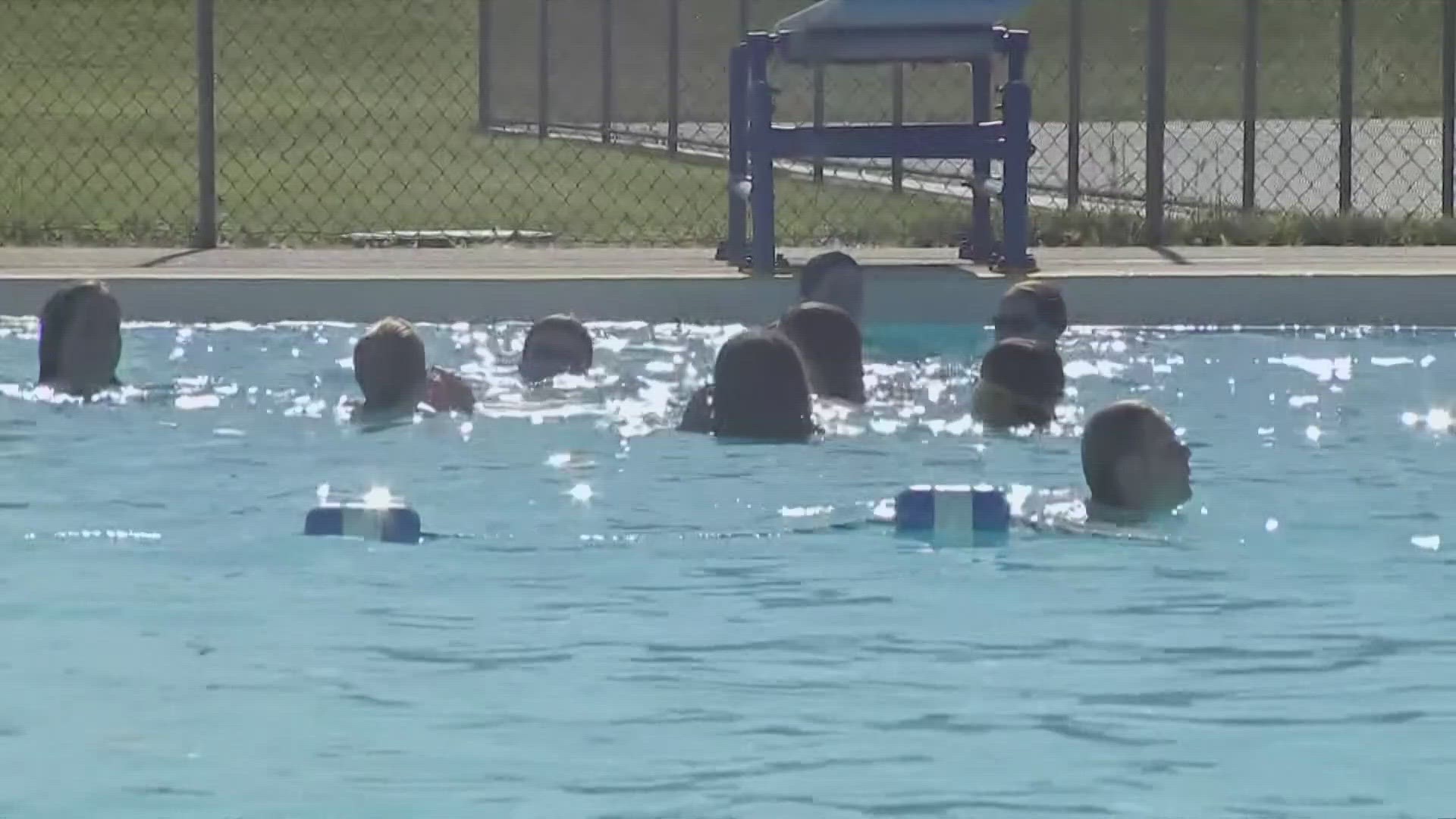ST. LOUIS — It’s summertime, and kids are spending a lot more time around the water.
This summer we want to keep you and your family safe and sound.
The American Academy of Pediatrics reports about 70% of U.S. drowning deaths in kids 15 and under happen between May and August.
5 On Your Side met with a CPR and swim safety expert who said drownings happen in a matter of seconds and we need to take lifesaving action just as quickly.
Lisa McMullin is the president and co-founder of the SWIM ON Foundation in St. Louis.
‘SWIM ON’ stands for Safer Waters in Memory of Nicholas.
Nicholas, McMullin’s son, drowned and passed away at just 22 months old.
“Many years later, we learned that drowning is the leading cause of death for children ages 1-4 and the second leading accidental cause of death for kids ages 5-9. We were horrified,” McMullin said.
So McMullin and her family started the foundation in 2019.
“We don't want any other family to go through what we went through,” she said.
The Center for Disease Control and Prevention reports that most drownings in children ages 1-4 happen in home swimming pools.
A few swim safety steps can save a life.
“It is the most preventable accidental injury," McMullin said.
The SWIM ON Foundation uses the acronym, S.A.F.E.R. to remind families of life-saving tips.
“S- stands for swim lessons, which can reduce drowning by 88%.”
“A- is for adult supervision.”
“F- is for fences and barriers. The American Academy of Pediatrics says having proper fencing around a pool -- four feet high and all four sides -- reduces the drowning of kids by 50%. It’s significant.”
“E- is for emergency response … That’s CPR, primarily, and knowing what to do.”
“R- is for regulation flotation," McMullin said. “The little arm bands that are inflatable, you can’t count on those. They are not safe to rely on.”
McMullin said when it comes to teaching children how to swim, the old-school method of throwing a child into a pool with the hopes of them learning how to swim out of instinct, is not the way to go.
“Water competency is going in, come to the surface, look around, identify an exit, and be able to swim 25 yards to get out. The 'throwing in the pool' method doesn’t really get you there," she said.
“Drowning is silent. It is fast. It happens in 20 to 60 seconds," she said.
If you can’t find your child at home, always check the pool first.
“A lot of the drownings for young children happen at non-swim times, when people are inside eating dinner or watching television," she said.
If the worst happens, don’t hesitate. Perform CPR and keep going until emergency responders arrive. If there’s a defibrillator around, open and use it.
McMullin explained the pacing of CPR compressions.
“It’s to the tune of ‘Staying Alive’ or there’s a whole Spotify list of songs you can do it to,” she said.
McMullin said to be sure someone dials 911 immediately. If you’re alone, dial 911 and put the phone on speaker as you start compressions to ensure emergency responders are on the way.
The American Red Cross has CPR guidelines on its website for performing compressions on babies, young and older children and adults.
The risk of drowning exists inside and out of a community or residential pool.
A lot of families will be heading to lakes and rivers this time of year, possibly for a float trip or boating. Trips on natural waters bring another set or safety risks.
McMullin said one of the biggest mistakes people make is assuming they can swim just as well in natural bodies of water as they can in pools.
The Missouri state Highway Patrol reports there were 46 people killed in accidental drowning incidents in state waters back in 2021. That’s nine more deaths than in 2020.
McMullin said you have to be aware of the differences that exist in moving water.
Pay attention to signage from parks and conservation areas. Be sure to have a coast guard certified life jacket for everyone out on the water. McMullin said the most important step is to put the life jacket on correctly and wear it at all times.
“I get frustrated with people who say ‘Oh, I’m just going to have it in the boat and that’s enough,’" she said.
"My response is, 'That’s like saying you’re going to have a seatbelt in the car, and you’ll put it on when an accident is about to occur.’ It doesn't work like that. The statistics show a lot of lives would be saved with people wearing their coast guard-approved, properly fitting life jackets," McMullin said.
To learn more about the SWIM ON Foundation, click here.
For CPR guidelines, click here.

